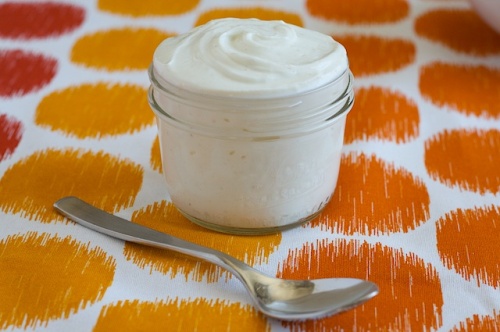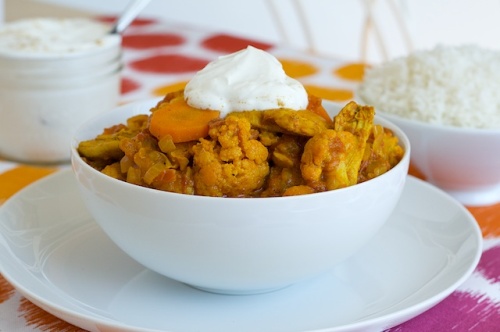Cooking has a rhythm, and if you delve deep enough into a specific cuisine, you’ll learn the beat. First it feels clumsy; like being the follow in a dance you’ve never tried. With enough practice, it starts to feel innate, and soon you don’t even have to think about the steps.
I grew up eating a mix of typical busy-family dinners, “experimental” combinations by my dad, and family recipes from my Mexican grandmother. In high school and college, I started experimenting in the kitchen, and learned to cook for myself. I began with the familiar rhythms of dishes my mom and grandma made, approximating the steps for a pasta sauce or some mashed potatoes; chicken tacos or spanish rice. Then, early adulthood opened my eyes to other tastes and ways of cooking. I went new places, I tried new cuisines with friends and classmates after orchestra rehearsals downtown. At some point in my early twenties, the thought occurred to me that I didn’t have to go out to eat the Indian, Middle Eastern, and Thai dishes I enjoyed occasionally at restaurants. I could cook. I wanted to cook.
Six years ago, I met my husband, and we shared (and still share) a voracious appetite for good food. It was he, my mister, who first introduced me to Indian food. I knew I was hooked on the aromas and complexity of spices early on, and decided to learn to cook it for myself, to quell the frequent cravings brought on by the mere mention of aloo gobi or tikka masala. For the past couple years, I’ve built up a small collection of Indian cookbooks, my favorites being Indian Home Cooking, and World of the East Vegetarian Cooking, both by Madhur Jaffrey. In America, Madhur Jaffrey is to Indian food as Julia Child is to French food. I don’t have an Indian grandmother to teach me, so I rely on the advice I find within the pages. So far, my repertoire consists of quite a few vegetarian dishes, a few relishes and chutneys, a couple of meat dishes, and a few different variations on basmati rice.
Now, I may have lost you at Indian food. You may be politely reading on, thinking, “I don’t have the spices for that,” or, “It sounds like too much work.” I shared similar thoughts as first paged through my cookbooks. I found that the first conundrum could easily be remedied with an internet search and a fifteen dollar investment (see tips on buying spices below). The second issue? Yes, Indian food takes a little time, but it all depends on your preparation. I have learned (the hard way) that, with Indian cooking (and most other cooking as well), preparation makes all the difference between chaos and calm.
You’ll be glad that you spent time chopping, measuring, and arranging, because once the first spices hit the pan, rhythm of Indian cooking really picks up. Spices are added in quick succession, in an order that allows them to release their oils and aromas without burning them. My first few tries, I was caught unprepared by rapid-fire directions like “two seconds later, after the mustard seeds begin to pop…” They do pop. Like firecrackers. Madhur Jaffrey wasn’t kidding. “Add the cumin, coriander and turmeric.” It took me a couple times of juggling spice jars to learn my lesson the hard way, which leads to…
Tip One: Read and Rehearse
•Read through the recipe. Read through it again. Mentally cook the recipe, picturing how the dish will come together.
Tip Two: Mise en Place (“Everything in its Place”)
•Chop all ingredients and set them by the stove in the order in which they will be added. If the recipe calls for making a paste (eg: out of garlic and ginger, etc…) make it ahead of time and set aside.
•Measure out your spices, and put them into small bowls in the order they will be added. If spices will be added at the same time, put them together in a bowl.
Tip Three: Find a Spice Source
Once you have a set of spices for a particular cuisine, you can make almost anything. I get my spices from:
•Specialty spice stores, such as Savory Spice. They grind their own spices, and sell them in smaller amounts, so you can buy an amount that will last you a couple of months. Your spices will stay fresh, and you’ll end up spending less money.
•Indian grocery stores: In my experience, you can find all the good quality spices you’ll need at a very reasonable cost.
•Recently, even grocery stores have begun to sell spices in their bulk section. You’ll be able to find many of the spices there, in any amount you choose.
I wouldn’t say Indian cooking feels completely innate, but I am starting to reach a certain level of comfort. Some of the previously foreign rhythms of the cooking process have become automatic, and I find myself making little tweaks to original recipes, adding some chopped tomatoes here, or a little extra garam masala there. There is a reason why so many people order chicken tikka masala out at restaurants. If you’ve never tried an Indian curry before, it is both a gateway drug into the world of aromatic spices, and an old standby you can return to. If you give it a go, you’ll end up with tender pieces of marinated chicken and vegetables bathed in a spiced tomato-based sauce layered with onion and ginger. Warming curries such as these are always best enjoyed with steamed basmati rice and a cool, creamy raita to balance each bite. Do you share my voracious appetite? Do you quell your cravings at your favorite restaurants, or do you go straight to the kitchen? I’d love to hear all about your successes, tips, and mishaps!
- For the marinade, chicken and vegetables :
- 3 tablespoons plain low-fat yogurt or unsweetened non-dairy yogurt
- ¾ teaspoons cayenne pepper (more or less to taste)
- 1 teaspoon ground cumin
- 1 teaspoon amchur powder (green mango powder)*
- ½ teaspoon sweet paprika
- ¼ teaspoon ground turmeric
- ½ teaspoon kosher salt
- 1 pound chicken breasts and chicken thighs, trimmed and cut into bite-sized pieces, OR 1 pound yukon gold potatoes cut into 1 inch pieces
- 1½ tablespoons olive oil
- 2 medium carrots, peeled and cut into ¼ inch discs
- 1 small head cauliflower, cut into bite-sized florets
- For the sauce:
- 2 tablespoons olive or coconut oil
- 1 large onion, finely chopped
- 1 teaspoon cumin seeds
- 1½ tablespoons tomato paste
- 1 tablespoon peeled, grated fresh ginger
- 1¼ teaspoons ground turmeric
- 1 teaspoon garam masala
- ¼ teaspoon ground cayenne, or to taste
- kosher salt
- 2 cups canned crushed tomatoes
- ¼ cup half-and-half (optional), or ¼ cup cashew cream
- Marinate the chicken: In a medium bowl, whisk together the yogurt, cayenne, cumin, ½ teaspoon of the amchur powder, paprika, ½ teaspoon salt, and the turmeric. Place the chicken in the bowl and toss to coat. Cover in plastic wrap and refrigerate for 2 to 12 hours. For the vegetarian version, make the marinade and set aside.
- Preheat the oven to 325˚F. Spread the chicken pieces onto a large baking sheet. Bake the chicken for 8-10 minutes, or until it is partially cooked and somewhat firm. Remove from the oven, sprinkle with the remaining ½ teaspoon of amchur powder, and set aside.
- Heat 1 tablespoon olive or coconut oil in a dutch oven or large heavy saucepan. When the oil is hot, cook the cauliflower (and potato if using) in a single layer, stirring occasionally, for about 6 minutes, or until golden in spots. Remove to a paper towel-lined plate to drain. Note: the potatoes can be cooked until golden, but don't need to be cooked completely, as they'll continue cooking during the simmer.
- Make the sauce: Heat 2 tablespoons oil in the dutch oven or large heavy saucepan over medium-high heat. Add the onion, carrots and cumin. Cook, stirring occasionally until the onion and carrot are softened but not browned--about 4 minutes. Stir in the tomato paste, ginger, turmeric, garam masala, cayenne, and kosher salt to taste. Cook for about 1 minute, then stir in the crushed tomatoes and the marinade (if making the vegetarian version) and simmer for about 15 minutes.
- Add the chicken and vegetables to the sauce, and simmer for 15 to 20 minutes, or until the chicken is cooked through. Stir in the half-and-half or cashew cream if using, and season with salt to taste. Serve hot, over basmati rice. Top with a dollop of cumin-scented raita.
- 1 cup plain greek yogurt or unsweetened plain non-dairy yogurt
- juice from 1 small lemon, about 1½ tablespoons
- ½ teaspoon ground cumin
- 1 garlic clove, peeled and minced or pressed
- kosher salt
- Whisk all ingredients together in a medium bowl. Season to taste with kosher salt.









Yey, I’m the first to comment! I love how you describe Indian cuisine. It is such a unique combination of powerful spices. I have made tikka masala and found the following additions to be interesting twists. A little honey can add a little sweetness to the dish that has a nice contrast to the acidity of the tomato. Also, traditionally chicken tikka is cooked in the tandoor oven, this gives it a smokey flavor that is hard to mimic in the kitchen. As a compromise I use the BBQ grill to cook the chicken instead of baking in the oven. This is an excellent recipe and a great entry for the unsuspecting American into the dance of India.
Nice comment, Nathan! I like your idea of bbqing the chicken to imitate the tandoor, as well as the addition of the honey. I’ll be giving that a try the next time around!
I have only barely dipped my toe into Indian cooking. Since i’m too impatient for misa en place, I get in trouble. The raita sounds so good. Have you ever tried it with spicy Mexican food.
Hi Paula! No, I’ve never tried raita with Mexican food. Now that I think of it, I think it would go pretty well! It would probably have the same cooling effect as sour cream.